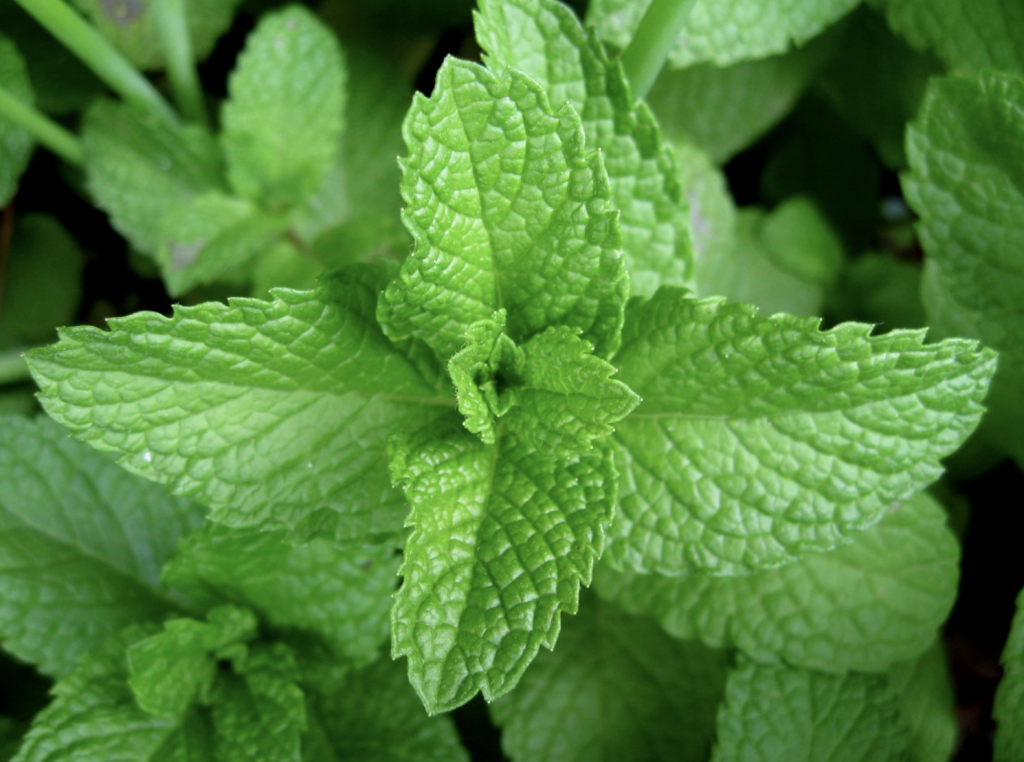Description
Mint plants belong to the Lamiaceae family, and are quick growing plants that can be identified by their square stems and their leaves that grow in pairs opposite to each other. Its size ranges from 12-18 inches tall and 18-24 inches wide. The plants bloom small white or purple flowers in the summer, which attract pollinators. They have long stems, which flop over when long enough. This process allows roots to form where the stems touch the ground, causing the plant to spread on its own rather aggressively. Mint is a perennial plant and it is toxic to animals. It is native to North America, Africa, and Australia.

Cultivation Tips
Mint should be planted in the spring after the last frost of the season. It requires partial to full sun exposure, and prefers moist and well-drained soil with a slightly acidic to neutral pH. The best Hardiness Zones to grow mint in depends on the particular species being planted, with the ideal zones ranging from 3-11.
Since mint spreads very aggressively, it should be planted separate from other garden beds to prevent mint from taking over the beds. Its growth requires regular pruning if it is not planted in a confined area. Each mint plant should be placed 18-24 inches from the next. It does not need to be placed very deep in the soil, as mint has very shallow roots. Seeds typically take 10-15 days to germinate, and the soil should be kept moist during the process. It takes roughly two months from when mint seeds are planted to when the plant reaches a harvestable size.
Uses
Mint has many uses. One of the most common is for eating and drinking. Mint can be used as a tasty addition to culinary dishes. It is rich in nutrients such as Vitamin A, Iron, Manganese, Fiber, and Folate, as well as being a good source of antioxidants. Its leaves can be steeped in hot water to make mint tea. It can also be used as a breath freshener by chewing on its leaves.
Ingesting mint can have many health benefits. It contains menthol, which relaxes the muscles of the digestive tract. Mint can also reduce harmful microbes and inflammation. This is why mint is commonly used to settle upset stomachs and indigestion, especially by those with IBS. Menthol also acts as a nasal decongestant, allowing mint to help reduce cold symptoms.
It is important to use mint with caution. Large amounts of peppermint oil can be toxic if ingested. Pure menthol is poisonous and should not be ingested; it should only be applied to the skin.
Mint acts as a repellent for unwanted creatures in your garden or even your house. Its scent repels deer as well as pests such as ants, mosquitos, cabbage moths, squash bugs, flea beetles, and more. Mint stems and leaves can be placed by other plants for the pest repellent effect without mint taking over.
Friends
Mint grows well with oregano, marigolds, carrots, cabbage, cauliflower, kale, tomatoes, eggplants, peas, and beans. This is because mint works to repel insects that typically are attracted to those plants. However, it should still be planted with caution, possibly in a pot of its own, because mint spreads so aggressively.